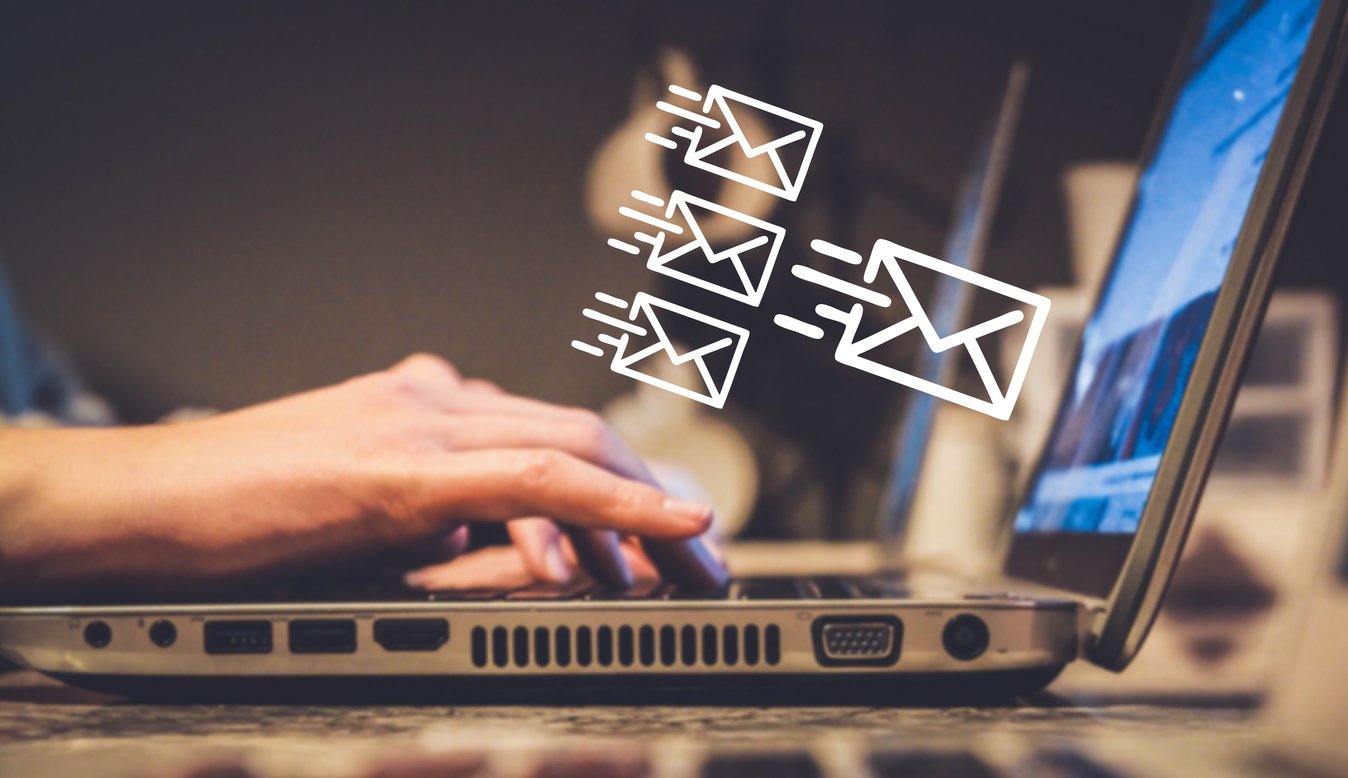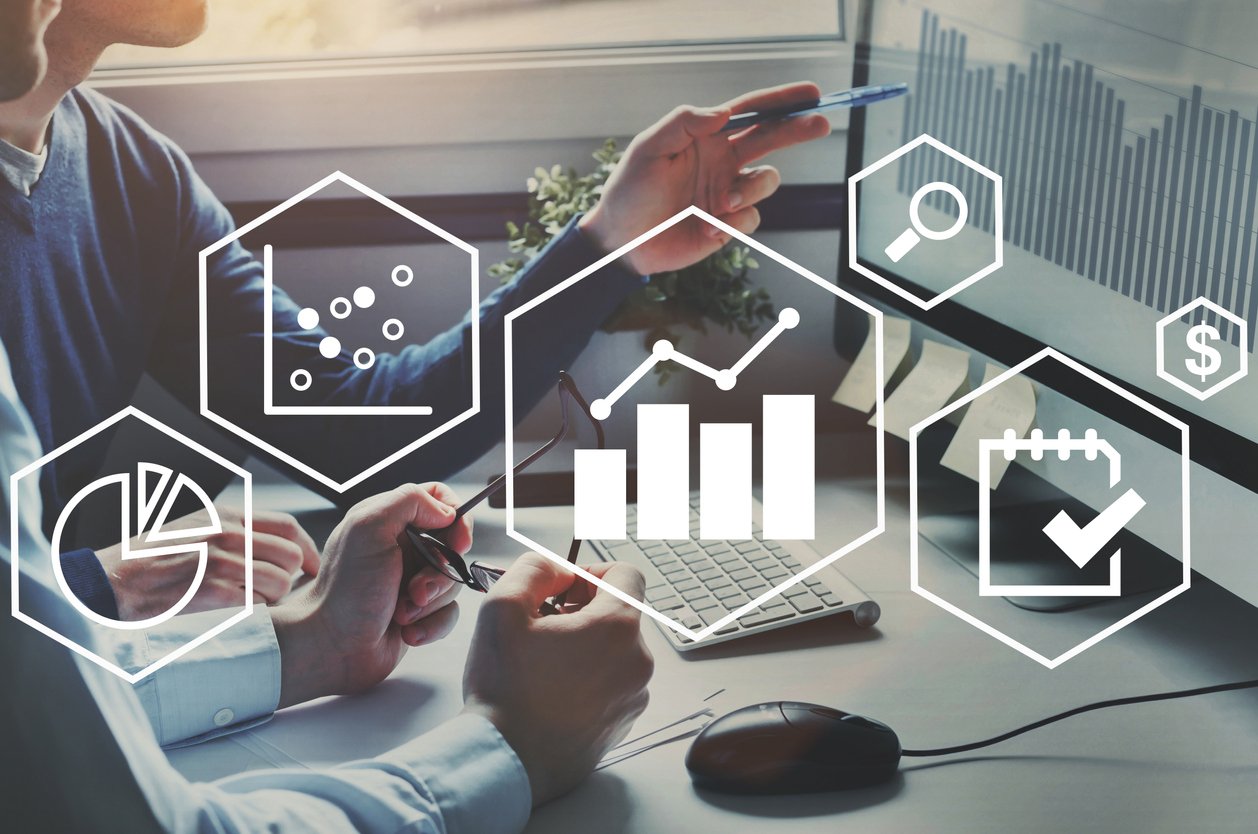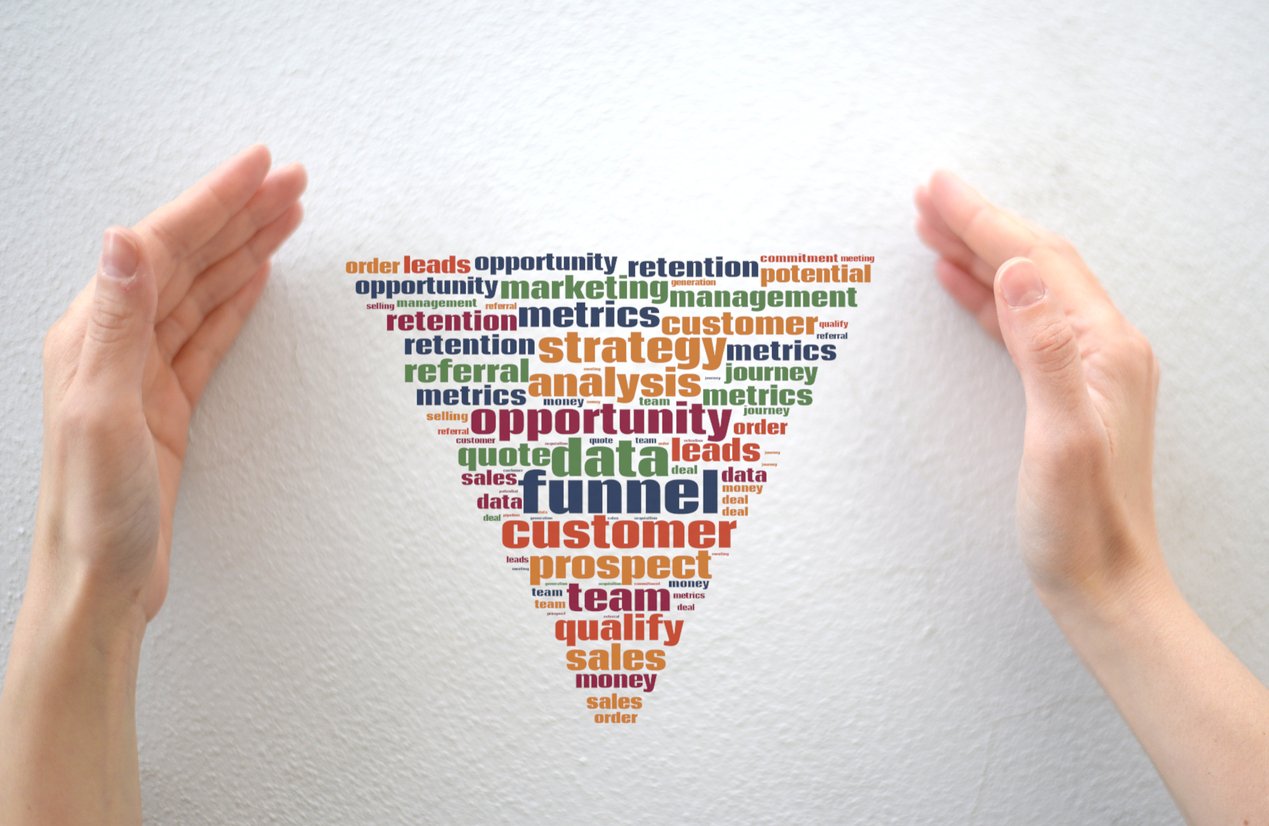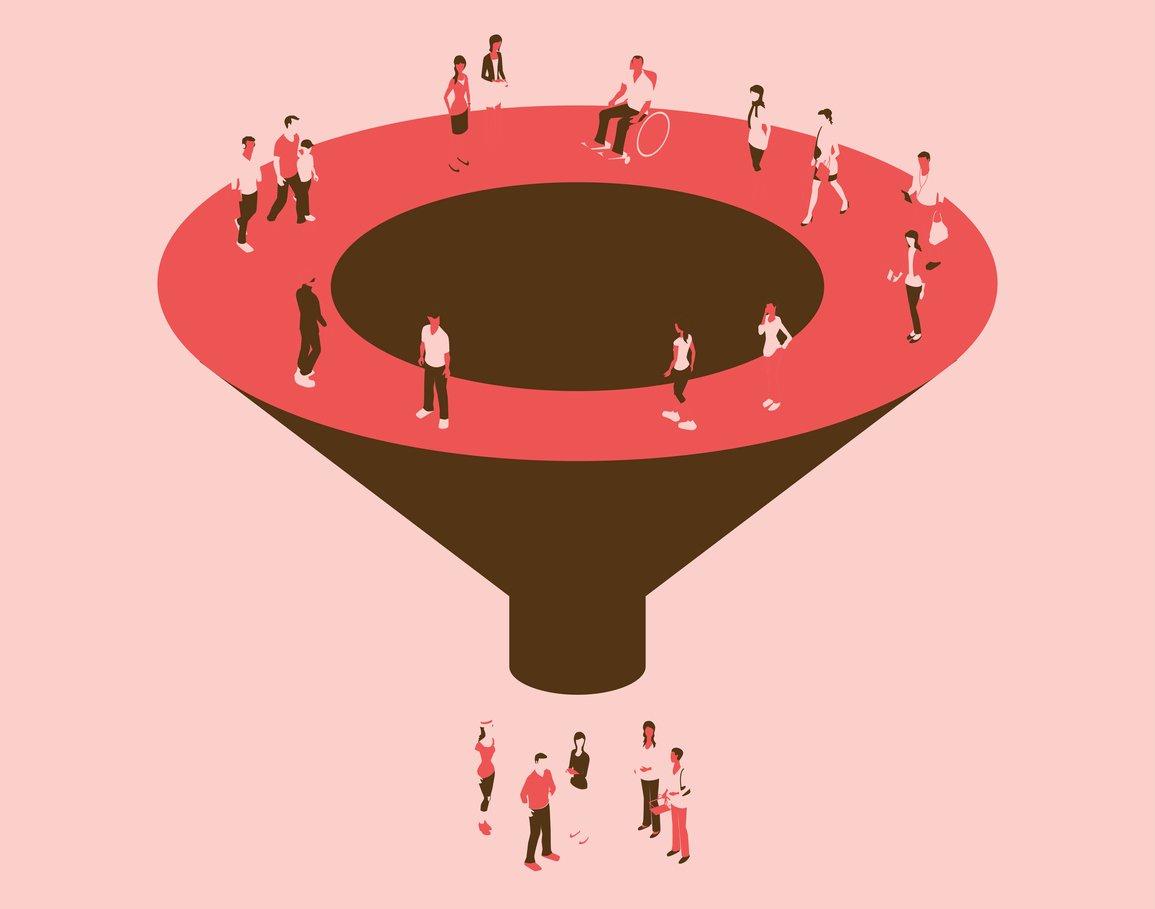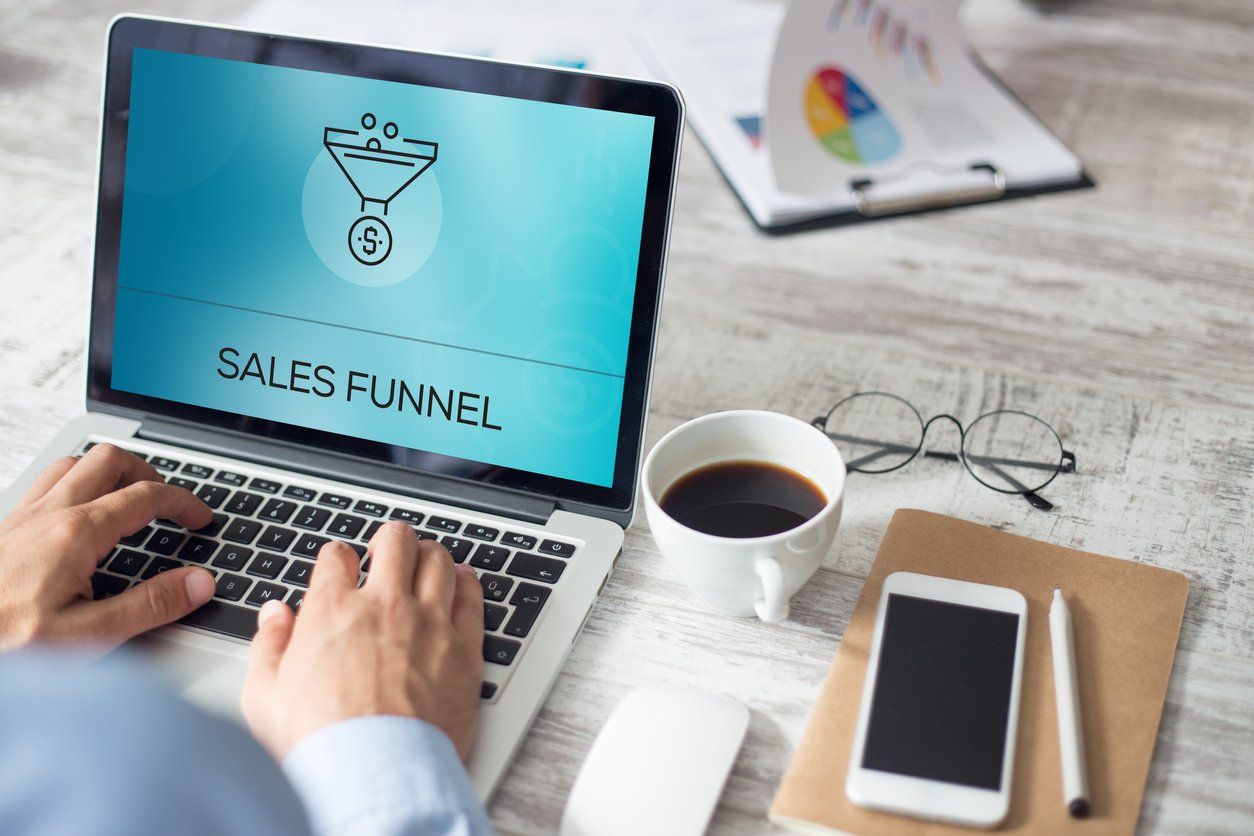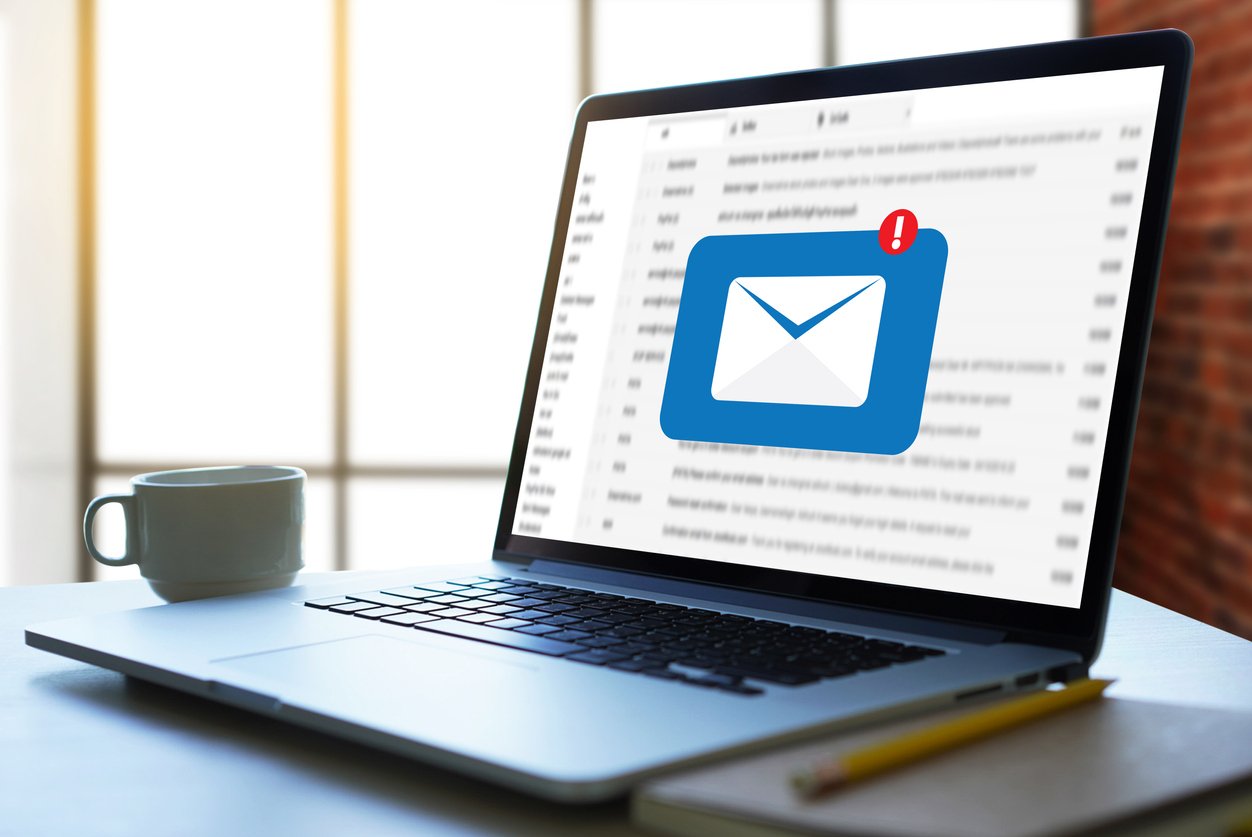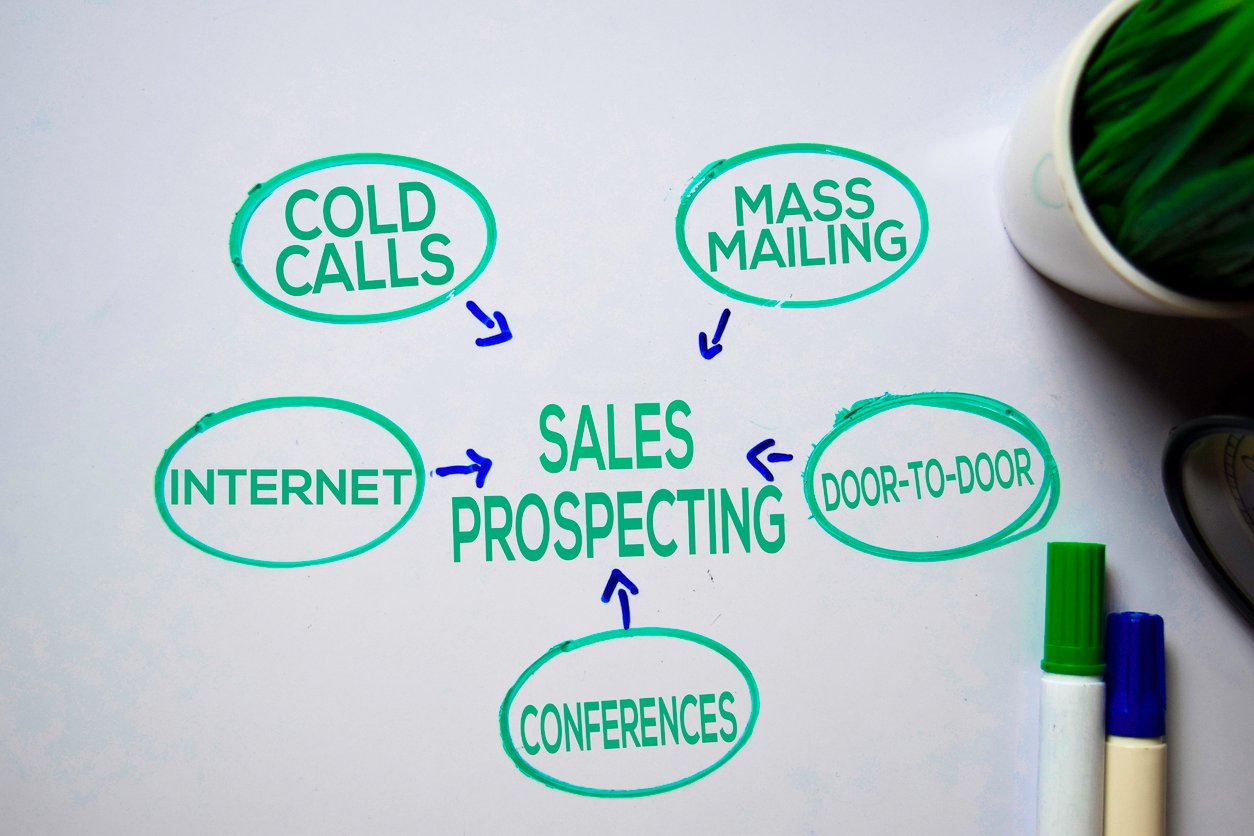
Sales Process in B2B [7 Steps to Developing and Refining It]
 Updated on
Updated on
 By Carlos Correa
By Carlos Correa
Carlos Correa
Carlos has been involved in the sales space for well over ten years. He began in the insurance space as an individual sales agent, managing teams as s...
learn more
Carlos Correa
Carlos has been involved in the sales space for well over ten years. He began in the insurance space as an individual sales agent, managing teams as s...
Table of Contents
Table of Contents
Most B2B teams agree that closing a deal feels great, but getting there? That's where the real challenge lies. The B2B sales process is less about pushing a product and more about guiding decision-makers through a maze of logic, trust, and timing.
Each stage demands precision: identifying prospects, nurturing them with value, and aligning your solution with their biggest headaches. Yet even the best sales reps can stumble when they rely on outdated playbooks or guesswork.
The smartest companies, especially in SaaS, treat their sales process as a living system, constantly analyzed, tested, and refined.
If your current process feels more like a gamble than a strategy, this guide will walk you through the 7 essential steps to build one that consistently converts and scales with your business.
What Is a B2B Sales Process?
The B2B sales process is a structured framework that guides how businesses sell products or services to other businesses, from identifying prospects to closing deals and nurturing long-term relationships.
The sales process for B2B exists to bring order to complexity. It gives sales teams a repeatable roadmap for acquiring customers, improving ROI, and increasing conversion rates through data-backed decisions and automation.
A clearly defined process helps align marketing and sales teams around shared goals, ensuring no lead slips through the cracks. According to research, companies that document and follow a defined sales process experience a 28% higher revenue growth than those that don't.
In the B2B SaaS sales process, structure matters even more. Deals often move through multi-stage funnels, including:
- Prospecting
- Lead qualification
- Demo
- Proposal
- Negotiation
- Onboarding
Each stage requires tailored communication and automation. For example, a SaaS startup selling project management software might use AI-powered CRM workflows to track engagement, score leads, and trigger automated follow-ups when prospects reach specific intent milestones. This not only speeds up the B2B sales cycle but also provides actionable data that helps refine the strategy over time.
B2B Sales vs B2C: What Are the Differences?

Selling to businesses and selling to consumers may sound similar, but the approach, strategy, and sales cycle couldn't be more different. B2B sales focus on logic, ROI, and long-term relationships, while B2C sales prioritize emotion, convenience, and instant gratification.
Here's a quick breakdown of the major differences between B2B and B2C sales:
|
Aspect |
B2B Sales |
B2C Sales |
|
Decision-Making |
Involves multiple stakeholders and longer approval chains. |
Usually made by one person, often impulsively. |
|
Sales Cycle Length |
Longer and multi-staged (weeks to months). |
Shorter, sometimes immediate. |
|
Sales Process Focus |
Relationship-driven, emphasizing ROI, customization, and scalability. |
Emotion-driven, emphasizing desire, price, and convenience. |
|
Average Deal Value |
Higher, often thousands or millions per contract. |
Lower, typically one-time or small purchases. |
|
Customer Relationship |
Long-term partnerships and recurring contracts. |
Transactional or short-term relationships. |
|
Marketing Approach |
Personalized content, account-based marketing, demos, and consultations. |
Mass marketing, influencer promotions, and discounts. |
|
Example |
Selling SaaS software to enterprises or startups. |
Selling streaming subscriptions or online courses to individuals. |
By recognizing how B2B and B2C sales differ, you can design a more effective sales process for B2B, adjust your messaging, and align your sales teams around the right buyer psychology.
Why the B2B Sales Process Is Important
A well-defined B2B sales process is the foundation that keeps revenue predictable and growth scalable. Without structure, sales teams risk losing leads, misaligning priorities, and wasting resources on deals that never close.
Here's why it matters:
Longer B2B Sales Cycles Demand Structure
The most glaring difference in B2B vs B2C sales is the timeline. You don't sell a $100,000 SaaS platform in a 10-minute impulse buy.
Recent data shows the average B2B sales cycle is getting even longer, now averaging 102 days, and that's just the average. For large, complex deals, it can be 6-12 months. During this time, you're not dealing with one person; you're navigating a "buying committee" of 6 to 10 stakeholders, all with different priorities.
A structured sales process for B2B is the only way to manage this chaos. It ensures you're:
- Building Momentum: It gives you clear next steps to prevent a "hot" deal from going cold.
- Mapping the Players: It forces you to identify the champion, the blocker, the decision-maker, and the CFO.
- Staying on Track: It provides milestones so you know if a deal is actually progressing or just stalling.
Helps Align Marketing and Sales Teams
The age-old war between Sales and Marketing stops when you have a shared process. Misalignment is incredibly costly, and studies show that when sales and marketing teams are aligned, companies see 36% higher customer retention rates and 38% higher sales win rates.
This is especially critical in saas software sales. Here's how a process fixes the disconnect:
- It Defines a "Lead": Marketing stops throwing "junk" leads over the wall because both teams have agreed on the exact definition of a "Marketing Qualified Lead" (MQL) and a "Sales Qualified Lead" (SQL).
- It Creates Seamless Handoffs: When Marketing passes a lead to Sales, the process dictates exactly what information must be included. The rep knows who the prospect is, what they've downloaded, and what pages they've viewed, making the pre approach in B2B sales 10x more effective.
- It Creates a Feedback Loop: Sales can systematically report back on which leads are closing, allowing Marketing to double down on what works and stop wasting budget on what doesn't.
Provides Efficiency for Startups Scaling Sales Teams
In startup sales, your first few deals are usually closed by the founders on pure grit. But you can't hire 10 reps and tell them to "just go sell." That's how you burn your venture capital.
A defined B2B sales process steps is the key to scalability. It turns sales from a founder's "superpower" into a teachable, repeatable system.
- Faster Onboarding: New hires have a playbook. They're not guessing; they're following the 7 steps that have already been proven to work.
- Better Forecasting: You can accurately predict revenue by seeing how many deals are in each stage of the pipeline, not just by asking reps for a "gut feeling."
- Pinpoint Coaching: You can see where reps are struggling. If a new rep has tons of demos but no proposals, you know to coach them on the "Demo-to-Trial" step, not on prospecting.
Impact on Customer Retention and Recurring Revenue
A refined sales process in B2B doesn't stop at the close. It extends into post-sale engagement. In SaaS, where recurring revenue drives growth, nurturing customer relationships is critical.
Bain & Company found that increasing customer retention rates by just 5% can boost profits by 25% to 95%. By incorporating retention strategies into the SaaS sales process steps, businesses ensure long-term satisfaction and sustainable revenue growth.
Stages of the B2B Sales Cycle
So, what do these B2B sales process steps actually look like in the wild?
A successful B2B sales process isn't a chaotic sprint from "hello" to "closed." It's a methodical, step-by-step journey. Think of it less like a sprint and more like an 8-stage professional relay race. Skipping a step (or fumbling the handoff) is the fastest way to lose the race.
While the exact names might change, nearly every successful sales process in B2B follows this framework.
1. Pre-Approach in B2B Sales (Research & Preparation)
This is, without a doubt, the most-skipped and most-critical stage. The pre approach in B2B sales is the homework you do before you ever pick up the phone or send that first email.
You wouldn't walk into a final exam without studying, so why walk into a sales call blind? Today's buyers have no patience for generic pitches. In fact, 71% of buyers expect personalized interactions. Your goal here is to find a reason to be in their inbox.
Look for:
- Company News: Did they just get funding? Launch a new product? Announce an expansion?
- LinkedIn Activity: What has your prospect (and their boss) been posting or commenting on?
- Tech Stack: What tools are they already using? (Tools like BuiltWith can tell you this).
- Competitor Mentions: Are they complaining publicly about their current provider?
2. Lead Generation & Prospecting
Now that you've done your homework, it's time to find your targets. This is the active "hunting" and "gathering" phase where you fill the top of your sales pipeline. This process generally falls into two buckets:
- Inbound: Marketing warms 'em up, sales knocks 'em down. These leads come to you by downloading a whitepaper, attending a webinar, or requesting a demo.
- Outbound: You are the hunter. You use the research from the pre-approach stage to build a list of "best-fit" companies and contacts, reaching out via cold email, cold calls, or LinkedIn.
3. Qualification
Stop. Wasting. Your. Time.
This stage is all about protecting your most valuable asset: your calendar. A rep's job isn't to talk to everyone; it's to talk to the right people.
Shockingly, some reports show that up to 50% of a rep's time is wasted on unproductive prospecting and leads that go nowhere.
Qualification is the filter that prevents this. You're asking: "Is this person a good fit for us?"
You can use a simple framework like BANT:
- Budget: Does this company have the money to buy our solution?
- Authority: Am I talking to the person who can actually make a decision?
- Need: Do they have a real, painful problem that I can solve?
- Timeline: Are they looking to solve this problem now or in two years?
Tools like CRM scoring and automated workflows can streamline this process, helping teams focus on the most promising opportunities.
4. Needs Analysis & Discovery
This is the single most important conversation you will have in the entire B2B SaaS sales process. This isn't a pitch. It's a diagnosis.
Your only job here is to shut up and listen. You are a doctor, and the prospect has a headache. Don't just prescribe your "pill" (the demo). Ask questions to find the source of the pain:
- "Walk me through your current process for [X]."
- "What happens when that process breaks? What's the real-world cost?"
- "What have you already tried to fix this?"
- "In a perfect world, what would this look like in 6 months?"
The answers you get here will form the entire basis for your presentation.
5. Presentation or Pitch
Welcome to the "demo" stage. This is where most SaaS software sales reps fail spectacularly.
A demo is NOT a product training session. Do not click every button. Do not show every feature. Nobody cares.
A great demo is a story. It's a "before and after." You should only show the specific parts of your product that directly solve the exact pains you uncovered in the discovery call.
- Bad Demo: "And this is our dashboard. You can customize widgets, export reports to PDF or CSV, and integrate with..."
- Good Demo: "Remember how you said your team spends 10 hours a week manually pulling reports? This is the dashboard that does that for you in 30 seconds. You click this one button, and you're done."
Research from Salesforce shows that 84% of B2B buyers expect sales reps to act as trusted advisors who understand their business, not pushy sellers.
6. Objection Handling
If you don't get objections, your prospect isn't paying attention. Objections aren't "no"; they are requests for more information or reassurance. Don't get defensive; get curious.
The most common objections are about:
- Price: "It's too expensive."
- Competitor: "We're already looking at [Competitor]."
- Time: "We don't have the bandwidth to implement this right now."
- Apathy: "What we have is fine."
Have a playbook for this. A simple framework is "Feel, Felt, Found." "I understand why you feel it's a big investment. A lot of our best customers felt the same way. But what they found was that the $5,000 in time they saved each month made this a no-brainer."
7. Closing the Deal
This is the moment of truth. In a modern B2B sales process, this shouldn't be a high-pressure, "buy now or the offer is gone" moment. If you've done the previous six steps correctly, closing is just a natural conclusion.
It's a simple, confident ask based on the value you've already established.
- "Based on our conversation about solving [Problem X] and [Problem Y], does it make sense to move forward?"
This stage is also about logistics: navigating legal redlines, getting the contract to the right signer (the "Authority" you identified back in Step 3), and setting a go-live date.
8. Post-Sale Follow-Up/Account Management
In SaaS B2B sales, the deal is never "closed-won." It's "closed-new."
The real money isn't in the first sale; it's in the recurring revenue for the next 10 years. This final stage is one of the most important B2B sales cycle stages. It involves a seamless handoff from the sales rep to the Customer Success or Onboarding team.
Your goal is to ensure all the promises made by Sales are kept by the product. A smooth handoff ensures the customer onboards quickly, sees value (ROI) immediately, and becomes a long-term, high-value account, and, ideally, a source for your next great case study.
7 Steps for Refining Your Sales Process for B2B

Ready to kick your B2B sales process into action? Just follow these 7 steps.
Here's a quick summary for those of you in a rush:
|
Step |
Summary |
|
1. Align Sales & Marketing on Lead Definitions |
Create a shared definition of a qualified lead to prevent misalignment and wasted effort. |
|
2. Personalize Outreach Using CRM and Automation |
Use data-driven personalization to boost engagement and conversion rates. |
|
3. Improve Discovery With Structured Questions |
Ask targeted questions to uncover pain points and buying motivations. |
|
4. Strengthen Value Proposition With ROI Calculators |
Quantify value to build confidence and support your pricing. |
|
5. Anticipate Objections With Data-Driven Responses |
Use insights and stats to proactively address buyer concerns. |
|
6. Shorten SaaS Sales Process Steps With Demos & Free Trials |
Let prospects experience your product early to accelerate decisions. |
|
7. Build Long-Term Trust Through Follow-up and Support |
Nurture relationships post-sale to improve retention and lifetime value. |
Okay, let's look at these a little deeper.
1. Align Sales & Marketing on Lead Definitions
Misaligned sales and marketing teams are one of the biggest revenue leaks in sales process B2B operations. When both departments define “qualified leads” differently, you risk missed opportunities and low conversion rates.
Establishing a shared definition, based on firmographics, intent data, and behavioral signals, ensures consistency.
2. Personalize Outreach Using CRM and Automation
If your reps are still sending mass emails that start with "Dear Sir/Madam," you've already lost. That's because they're missing out on an important aspect: Personalization. In fact, personalized emails can deliver 6x higher transaction rates, but most reps don't have time.
This is where you combine your CRM with automation tools.
- CRM (Customer Relationship Management): This is your team's "brain." It stores all data from the pre approach in B2B sales (like their job title, company news, and past interactions).
- Automation (like Outreach or Salesloft): This is the "engine." It lets you send a sequence of emails at scale, but with a critical difference: it uses merge fields from your CRM to make each one feel personal.
Instead of "checking in," you can automate an email that says, "Hi John, I saw your company just launched [New Product]. Congrats! I was curious how you're handling [Problem] as you scale."
3. Improve Discovery With Structured Questions
The single biggest mistake in SaaS software sales is "pitching" too early. Your prospect doesn't care about your 10 features; they care about their one problem.
Refine your "Needs Analysis" stage by arming your reps with a set of structured discovery questions.
- Bad Question: "Do you have a problem with X?" (Yes/No)
- Good Question: "Walk me through, step-by-step, how your team currently handles X." (Opens them up)
- Great Question: "What's the business cost when that process breaks? Does it mean late nights for your team? Do you lose data?" (Gets to the emotional and financial pain)
This turns your reps from "product pushers" into "problem solvers."
4. Strengthen Value Proposition With ROI Calculators
In B2B, the final decision-maker is often a CFO or VP who doesn't care about your fancy UI. They care about one thing: Return on Investment.
Your value proposition is weak if it's just a claim. "We save you time" is a claim. "We save your 10-person team 5 hours a week each, which at an average loaded cost of $75/hr, is an ROI of $195,000 a year" is a business case.
Embed an ROI calculator directly into your B2B sales process. Give it to your reps to fill out with the prospect during the demo. It makes the value tangible and gives your champion the exact numbers they need to get the deal approved by finance.
5. Anticipate Objections With Data-Driven Responses
Most reps get the same 3-5 objections on every call ("It's too expensive," "We don't have time," "How are you different from [Competitor]?").
Stop letting your reps get flustered and start using data. Here's how:
- Track: Force reps to log every "Closed-Lost" deal in the CRM with a specific "Loss Reason."
- Analyze: Every month, pull a report. What are the top 3 reasons you lose?
- Build: Create a "Battle Card" for each objection. Give your reps a proven, confident, data-driven response. If the objection is price, your response should be armed with an ROI calculation. If it's a competitor, your response should highlight your 2-3 specific, provable advantages.
6. Shorten B2B SAAS Sales Process Steps With Demos & Free Trials
The traditional B2B sales cycle stages can be painfully long. In a B2B SaaS sales process, your best salesperson is often your product itself.
Let the prospect "try before they buy."
- Demos: Stop using generic, one-size-fits-all demos. Use the discovery info to personalize the demo to their exact pain points.
- Free Trials: This is the ultimate way to shorten the sales cycle. Instead of telling them your product works, you show them. A 14-day free trial can build more trust than 4 weeks of follow-up calls. For B2B SaaS, a good free-trial-to-paid conversion rate can be as high as 25% or more, proving its power.
7. Build Long-Term Trust Through Follow-up and Support
In SaaS B2B sales, the sale isn't the finish line; it's the starting gun. Your real profit comes from recurring revenue and customer lifetime value (LTV). A sloppy onboarding experience after the deal is signed is one of the main causes of churn.
Refine your "Post-Sale" step into a formal, structured process:
- Internal Handoff: The Account Executive must fill out a "transition doc" for the Customer Success Manager (CSM), detailing the customer's goals, pain points, and expectations.
- Warm Introduction: The AE schedules a kick-off call and personally introduces the customer to their new CSM, creating a seamless, high-trust transfer.
Every adjustment in the steps above, from smarter automation to clearer communication, compounds over time, turning your B2B sales process into a repeatable, high-performing engine for growth.
4 SaaS B2B Sales Strategies

Having solid B2B sales process steps is the foundation. Layering on a specific strategy is how you win your market, especially in the competitive saas software sales world. These four strategies are proven to build and scale a modern sales machine.
1. Product-Led Growth (Free Trials, Freemium Models)
This strategy flips the traditional sales model on its head. Instead of sales telling the prospect how great the product is, the product shows them.
PLG uses a freemium or free-trial model as the primary driver of customer acquisition. Users sign up, experience the "Aha!" moment on their own, and upgrade when they hit a feature wall or usage limit.
PLG works because it's a low-friction, high-trust approach. In a PLG model, your best "salesperson" is a great user experience.
2. Account-Based Selling for Enterprise Clients
For high-value deals, one-size-fits-all outreach doesn't cut it. Account-based selling (ABS) tailors your sales process in B2B to individual enterprise clients through personalized content, demos, and multi-stakeholder engagement.
ABS works because it's a hyper-focused, quality-over-quantity approach. It's also ideal for startup sales teams chasing large, complex enterprise deals.
3. Automation & CRM-Driven B2B Sales Process Steps
Automation is the backbone of an efficient B2B SaaS sales process. From lead scoring to follow-up reminders, CRM systems help teams manage pipelines, eliminate manual tasks, and track every touchpoint. This not only improves productivity but also ensures consistency across the sales process for B2B.
4. Using AI/Analytics to Refine Outreach
AI tools now play a critical role in optimizing the B2B sales process. Predictive analytics can identify high-intent leads, personalize outreach timing, and analyze engagement data for better targeting. In SaaS B2B sales, this means reaching the right person with the right message at the right time.
When combined, these strategies turn a traditional sales process B2B into a scalable, intelligent system, one that adapts, learns, and drives consistent growth across your entire SaaS business.
Final Thoughts

A well-developed and customer-centric sales process in B2B circles is the secret to success.
Except it's not really even a secret. Because we've just told you how to do it.
However, it is the thing that separates the highest-performing B2B sales teams from the pack. Well, it's one of two things.
The other is a robust platform for managing their B2B sales process. Yeah, we're talking about a CRM.
Save yourself the hassle of days of research and just jump straight into a demo of Ringy.

Skyrocket your sales with the CRM that does it all.
Calling? Check. SMS? Check. Automation and AI? Check. Effortlessly keep in touch with your customers and boost your revenue without limits.

Take your sales to new heights with Ringy.
Sales in a slump? Ringy gives you the tools and flexibility you need to capture leads, engage with them, and turn them into customers.
Subscribe to Our Blog
Enter your email to get the latest updates sent straight to your inbox!
Categories
Related Articles







